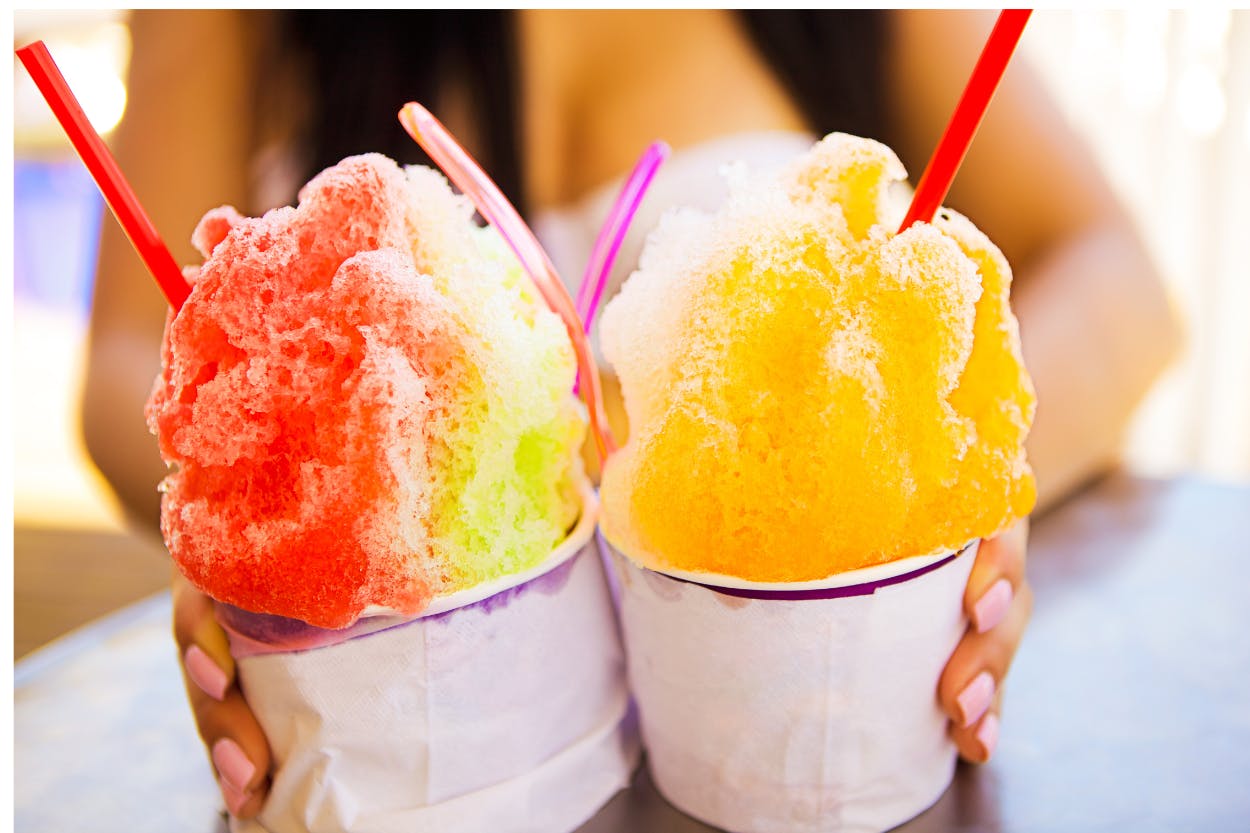To the untrained eye, shave ice and snow cones may appear to be one and the same: frozen treats topped with colorful syrups, beckoning on a hot summer day. However, beneath their similar appearances lies a world of distinction, a tale of two frozen delights with unique origins, textures, and cultural significance.
First, the flavors are different. I remembered fruit flavors like grape or cherry. In Hawaii, the flavors include guava, mango and passion fruit. They often add green tea, blue Hawaii and coconut. Each stand creates a few specialties. This was the difference I guessed.
In addition to the flavor of the syrup, the ice is different. I could not remember the texture of snow cones enough to be sure, but my grandson was emphatic. In Hawaii, the ice is slivered so that it absorbes the flavor of the syrup. He said: “With snow cones, I would drink the syrup from the bottom of the cup and then have a bunch of plain ice that I just threw away.” In contrast, my daughter said “I don’t like the sweet syrup, so I would just eat the ice, but chewing on it hurt my teeth and I would pour out the syrup from the bottom of the cup.” When we bought snow cones in Hawaii, the syrup melded with the ice like a frozen slushy. They both finished the ice and syrup simultaneously.
Shave ice, with its delicate, snow-like texture, traces its roots to ancient Japanese traditions, where it was known as kakigori. This refreshing treat found its way to Hawaii in the late 19th century, embraced by the local population and transformed into a culinary icon.
Shave ice is meticulously crafted, with a block of ice carefully shaved into wispy, airy flakes. This delicate process results in a light, fluffy texture that melts effortlessly in the mouth, absorbing the flavors of syrups and toppings with ease.
In contrast, snow cones hail from the American South, where they emerged as a popular treat during the early 1900s. Their preparation is simpler, with ice cubes crushed into coarse granules, resulting in a denser, crunchier texture.
As with many food items, the portions in Hawaii are generous. I remember snow cones the size of a tennis ball in a coned cup. Even the small size in Hawaii is more like the size of a soft ball. Further, there are options that combine ice cream with ice to make hybrid shave ice confections.
The distinction extends beyond texture to the very essence of each treat. Shave ice exudes an air of refinement, a delicate balance of artistry and flavor. It’s a symbol of Hawaiian culture, a refreshing respite from the tropical heat, and a testament to the ingenuity of Hawaiian cuisine.
Snow cones, on the other hand, embody a sense of nostalgia, a reminder of childhood summers spent at carnivals and fairs. Their bold flavors and crunchy texture evoke a sense of fun and carefree abandon.
Both shave ice and snow cones offer a delightful escape from the heat, but their distinct personalities cater to different tastes and preferences. Shave ice appeals to those who appreciate a delicate, nuanced experience, while snow cones cater to those seeking a nostalgic, bold flavor adventure.
Shave ice stands dot the Hawaii shores and are not difficult to find (many of the shrimp stands on the North Shore of Oahu also sell shave ice, as do places on Waikiki). But a shave ice is not just the Hawaii name for a snow cone. It is the tropical cousin of mainland snow cones: a product of the island flavor fusion with a different texture entirety. Surrender your taste buds to the islands and enjoy!




